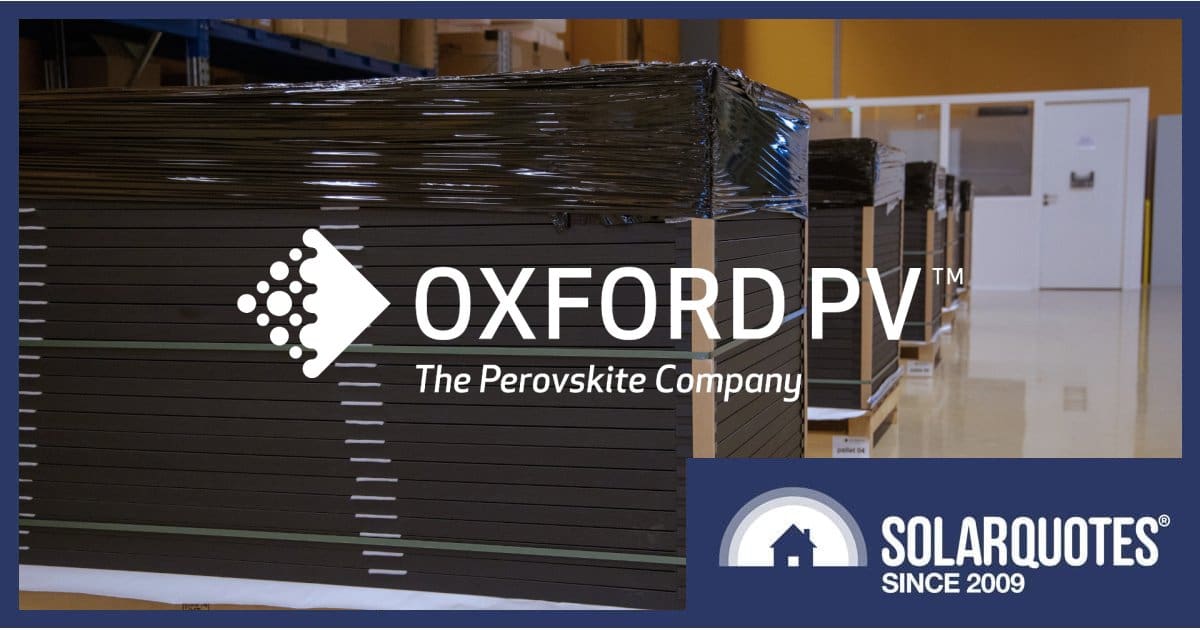Breakthrough Indoor Solar Cells Could Keep Smart Devices Running Forever – Study Finds

Report on High-Efficiency Indoor Photovoltaics and Their Impact on Sustainable Development Goals
A recent study details the development of wide bandgap perovskite solar cells optimized for indoor light harvesting. This technological advancement presents a significant opportunity to address global energy and environmental challenges, aligning directly with several United Nations Sustainable Development Goals (SDGs). The research demonstrates a viable path toward powering billions of low-energy electronic devices sustainably.
Technological Breakthrough: The Triple Passivation Treatment
The core innovation is a “Triple Passivation Treatment” (TPT) reassembly strategy designed to enhance the performance and stability of perovskite solar cells under ambient lighting conditions.
Methodology
The TPT strategy involves the sequential application of three chemical compounds to mitigate material defects and instability:
- Rubidium Chloride (RbCl): Deposited on the electron transport layer.
- N,N-dimethyloctylammonium Iodide (DMOAI): Integrated into the perovskite precursor solution.
- Phenethylammonium Chloride (PEACl): Applied as a surface treatment.
This treatment effectively modifies the perovskite surface, converting it from an n-type (electron-rich) to a p-type (electron-deficient) state, which significantly improves power extraction from indoor light sources.
Performance Metrics
- Power Conversion Efficiency: The cells achieved an indoor power conversion efficiency (iPCE) of 37.6% under standard 1000 lux office lighting.
- Defect Reduction: The treatment resulted in a fourfold increase in photoluminescence quantum yield (PLQY), indicating a substantial reduction in energy-wasting defects.
- Durability: Unencapsulated devices retained 92% of their initial performance after over 3,200 hours in storage and 76% of their efficiency after 300 hours of continuous, high-temperature light soaking.
Alignment with Sustainable Development Goals (SDGs)
This research provides a direct contribution to achieving a more sustainable future by addressing key SDG targets.
SDG 7: Affordable and Clean Energy
The technology promotes access to clean energy by transforming ambient indoor light into a usable power source. By utilizing existing infrastructure (indoor lighting), it offers a decentralized energy solution for a vast range of applications. The potential for low-temperature, cost-effective manufacturing processes further supports the goal of making clean energy affordable and accessible.
SDG 12: Responsible Consumption and Production
The primary application of this technology is to power the burgeoning Internet of Things (IoT), which is projected to include 500 billion devices by 2030. By enabling self-powered devices, these solar cells can drastically reduce, and in many cases eliminate, the reliance on disposable batteries. This directly tackles the growing problem of electronic waste and promotes sustainable production and consumption patterns.
SDG 9: Industry, Innovation, and Infrastructure & SDG 11: Sustainable Cities and Communities
The development represents a significant scientific innovation with broad industrial applications. It supports the creation of resilient and sustainable infrastructure by enabling autonomous, self-powered devices for:
- Smart homes and offices (thermostats, security sensors).
- Industrial monitoring systems.
- Smart city applications (environmental sensors, public infrastructure monitors).
By removing the need for battery maintenance, this technology facilitates the large-scale deployment of smart infrastructure, making cities and industries more efficient, responsive, and sustainable.
Conclusion and Future Outlook
The development of high-efficiency indoor perovskite solar cells is a pivotal step toward a self-powered, sustainable future. The technology’s ability to harvest ambient energy effectively addresses the critical need for clean power sources for small electronics, directly supporting SDG 7. Its potential to eliminate billions of disposable batteries makes a profound contribution to SDG 12 by mitigating electronic waste. Furthermore, by enabling the next generation of smart infrastructure, this innovation is crucial for advancing SDG 9 and SDG 11.
With discussions underway for commercial scale-up, this technology is poised to transition from the laboratory to real-world applications, turning ubiquitous indoor lighting into a continuous power source for the connected world.
1. Which SDGs are addressed or connected to the issues highlighted in the article?
Explanation:
- SDG 7: Affordable and Clean Energy: The article’s central theme is the development of a new technology to harvest energy from indoor lighting. This directly relates to promoting clean and renewable energy sources. The research aims to provide a sustainable power source for a vast number of electronic devices, contributing to the overall goal of clean energy access.
- SDG 9: Industry, Innovation and Infrastructure: The research represents a significant scientific innovation with direct applications for infrastructure, specifically the “Internet of Things” (IoT). The article mentions the challenge of powering 500 billion connected devices by 2030 and presents this technology as a solution to make this infrastructure more sustainable and resilient.
- SDG 12: Responsible Consumption and Production: The technology is presented as a direct alternative to disposable batteries. The article explicitly calls the practice of constantly replacing billions of batteries “unsustainable.” By creating a long-lasting, self-powering solution for small electronics, this innovation promotes the reduction of waste generation, a key aspect of responsible consumption and production patterns.
- SDG 17: Partnerships for the Goals: The article highlights that the research was a collaborative effort involving scientists from University College London and several international institutions in the UK, China, and Switzerland. It also mentions multiple funding sources and discussions with industry partners for commercial deployment, underscoring the importance of partnerships in achieving technological breakthroughs for sustainable development.
2. What specific targets under those SDGs can be identified based on the article’s content?
Explanation:
- Target 7.2: “By 2030, increase substantially the share of renewable energy in the global energy mix.” The development of perovskite indoor solar cells introduces a new way to utilize a renewable source (ambient light) to generate electricity, contributing to this target.
- Target 7.3: “By 2030, double the global rate of improvement in energy efficiency.” The article’s primary focus is the breakthrough in indoor power conversion efficiency (iPCE), which reached 37.6%. This represents a dramatic improvement in the efficiency of harvesting energy from indoor light sources.
- Target 9.5: “Enhance scientific research, upgrade the technological capabilities of industrial sectors… encouraging innovation…” The entire article describes a cutting-edge research project published in a scientific journal, which enhances scientific knowledge and proposes a technological upgrade for the electronics industry.
- Target 12.5: “By 2030, substantially reduce waste generation through prevention, reduction, recycling and reuse.” The technology’s purpose is to power IoT devices indefinitely, thereby preventing the waste generated from disposing of billions of single-use batteries.
- Target 17.6: “Enhance North-South, South-South and triangular regional and international cooperation on and access to science, technology and innovation…” The project is a clear example of this, involving collaboration between researchers from institutions in the UK, China, and Switzerland.
3. Are there any indicators mentioned or implied in the article that can be used to measure progress towards the identified targets?
Explanation:
- Indoor Power Conversion Efficiency (iPCE): This is a direct, quantifiable indicator of progress towards energy efficiency (Target 7.3). The article states a specific achievement of 37.6%, which is described as among the top performers for this type of cell.
-
Device Durability and Performance Retention: The article provides specific metrics to measure the technology’s sustainability and long-term viability (relevant to Target 9.5). The indicators are:
- 92% performance retention after more than four months (3,200 hours) in storage.
- 76% efficiency retention after 300 hours of continuous high-temperature light soaking.
- Photoluminescence Quantum Yield (PLQY): This is mentioned as a key technical indicator of improved energy conversion potential. The article states it “jumped fourfold, from 0.5% to 2.1%,” demonstrating a measurable improvement in the material’s quality.
- Reduction in Battery Waste (Implied): While not a direct metric in the study, the article’s premise is to solve the “unsustainable practice” of replacing “billions of batteries” for the projected “500 billion devices” of the IoT. The success of this technology would be measured by the reduction in battery consumption and waste (Target 12.5).
- Number of International Collaborations: The article explicitly mentions that the research involved institutions from the UK, China, and Switzerland, serving as a direct indicator for Target 17.6.
4. Table of SDGs, Targets, and Indicators
| SDGs | Targets | Indicators |
|---|---|---|
| SDG 7: Affordable and Clean Energy | 7.2: Increase the share of renewable energy. 7.3: Improve energy efficiency. |
|
| SDG 9: Industry, Innovation and Infrastructure | 9.5: Enhance scientific research and upgrade technological capabilities. |
|
| SDG 12: Responsible Consumption and Production | 12.5: Substantially reduce waste generation. |
|
| SDG 17: Partnerships for the Goals | 17.6: Enhance international cooperation on science, technology, and innovation. |
|
Source: studyfinds.org

What is Your Reaction?
 Like
1
Like
1
 Dislike
1
Dislike
1
 Love
1
Love
1
 Funny
0
Funny
0
 Angry
0
Angry
0
 Sad
0
Sad
0
 Wow
0
Wow
0










/campaigns/16-days-of-activism-against-gender-based-violence/pr-web-banner.tmb-1200v.jpg?sfvrsn=8cc7b98e_1#)



























































;Resize=805#)









